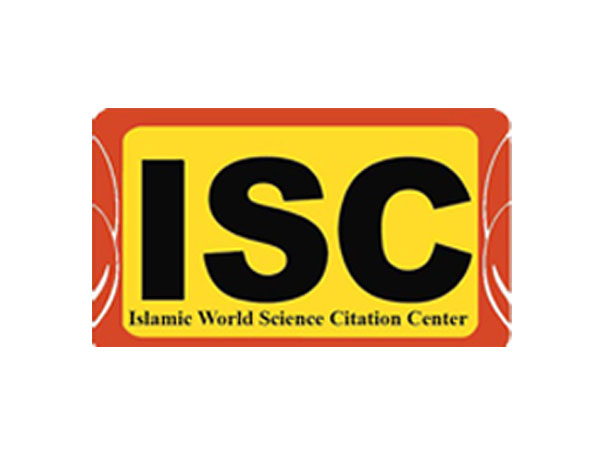About the journal
"Journal of Food Technology and Nutrition" to develop the frontiers of knowledge and enhance scientific research in the field of food science and nutrition, establish communication and coordination between researchers, experts and students in universities and research institutes and help to further align scientific research have been published in Persian language with English abstracts since 2003.
This journal accepts original research paper, review papers and short communications on wide range of food science, food technology and nutrition that have not been previously published in domestic or foreign journals with scientific and technical judgment and publishes them quarterly as open access.
The scientific quality of all papers submitted for the journal initially is assessed by the editor for suitability for the journal. Papers deemed suitable are then typically sent to at least two independent expert reviewers to assess the scientific quality of the paper in double blind style.
The Editor in cheif is responsible for the final decision regarding acceptance or rejection of articles. The authors at the same time as submitting their article, sign a letter of commitment, according to which they transfer all material and intellectual rights to publish the article to the Journal of Food Technology and Nutrition, and after the publication, the copyright authorization will be transfer to the journal. For more information, read the authors' guide.
“This journal is following of Committee on Publication Ethics (COPE) and complies with the highest ethical standards in accordance with ethical laws”
Journal of Food Technology and Nutrition uses iThenticate for plagiarism screening and verifying the originality of content submitted before publication. To prevent plagiarism, this magazine should use the iranpaper system (click) to send a similarity report to the quarterly. َAuthors should notice that the similarity report they receive from lthenticate must be sent to the quarterly.
-
Open Access Article
1 - Investigating the physicochemical properties of the beneficial dark chocolate with Ganoderma lucidum mushroom
Yasaminzahra Bazyar * ، M. Rabbani ، محمد حسین عزیزیIssue 2 , Vol. 22 , Spring 2025
-
Open Access Article
1 - The Antioxidant Activity of Black Tea Extract and its Synergism with Soyabean Oil Phospholipids
E. Daryayee ، Sh. Shahriari *Issue 2 , Vol. 17 , Summer 2020 -
Open Access Article
2 - A Review on the Production of Food Flavorings by Biotechnological Methods
A. Basati ، M. Khan bagi Doghahe ، M. Gharachorloo *Issue 1 , Vol. 21 , Winter 2024 -
Open Access Article
3 - An overview of the place of fiber in nutrition, health and its application and methods of modification in the food industry
Morva Hosseiny * ، Peyman RajaeiIssue 2 , Vol. 21 , Spring 2024 -
Open Access Article
4 - Evaluation of cadmium accumulation and absorption of micronutrient elements in lettuce (Lactuca sativa L.) under cadmium chloride stress
R. Heydari ، E. Mohajel Kazemi ، H. Nosrati ، M. Kolahi * ، A. MovafeghiIssue 1 , Vol. 21 , Winter 2024 -
Open Access Article
5 - Cold plasma hydrogenation of soybean oil using voltage of 15 kV and 50% hydrogen-50% nitrogen gas composition
zoha sirati ، Maryam Gharachorloo * ، Hamidreza Ghomi Marzdashti ، Reza AZIZINEZHADIssue 2 , Vol. 21 , Spring 2024 -
Open Access Article
6 - Using agricultural wastes and food residues for algal cultivation
yasamin fayaz ، Masoud Honarvar *Issue 3 , Vol. 19 , Autumn 2023 -
Open Access Article
7 - Optimizing the conditions of frying chicken fillets using hot air by the response surface method
F. Keshavarzian ، H. Mirzaei * ، M. Soltani firoz ، َA. Sadeghi Mahoonak ، M. Khan Ali ، H. Tashe Shams AbadiIssue 1 , Vol. 21 , Winter 2024 -
Open Access Article
8 - Modeling of Supercritical Extraction of Essential Oil from Orange Peel
Marjan Haghayegh * ، Seyyed Ali Vaziri ، Fatemeh Zabihi ، Mohammad Hassan EikaniIssue 1 , Vol. 11 , Winter 2014 -
Open Access Article
9 - Physicochemical Properties of Iranian Rice Bran Protein Concentrate
Ali Akbar Keshavarz Hedayati * ، Mehran Alami ، Ali Motamedzadegan ، Yahya Maghsoodlou ، Mohammad Ghorbani ، ُSoheil AmiriIssue 1 , Vol. 11 , Winter 2014 -
Open Access Article
10 - Investigation the Contamination of Heavy Metals Lead, Cadmium and Arsenic in High Consumption Rice Samples of Anbarbo in Some Parts of Khuzestan Province
B. Shirzad ، N. Khakipour *Issue 1 , Vol. 19 , Winter 2022






